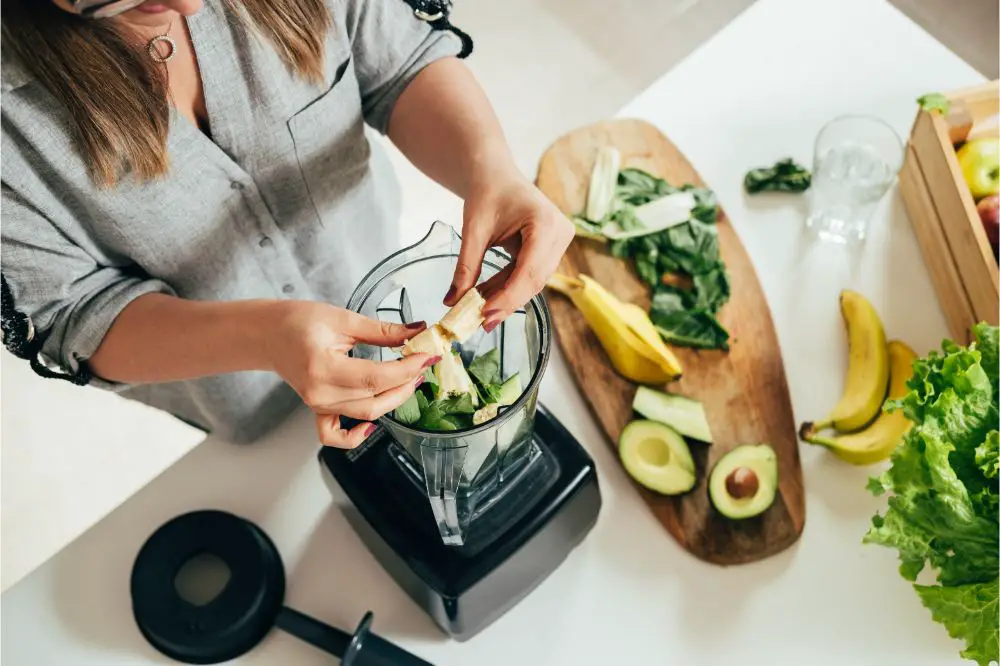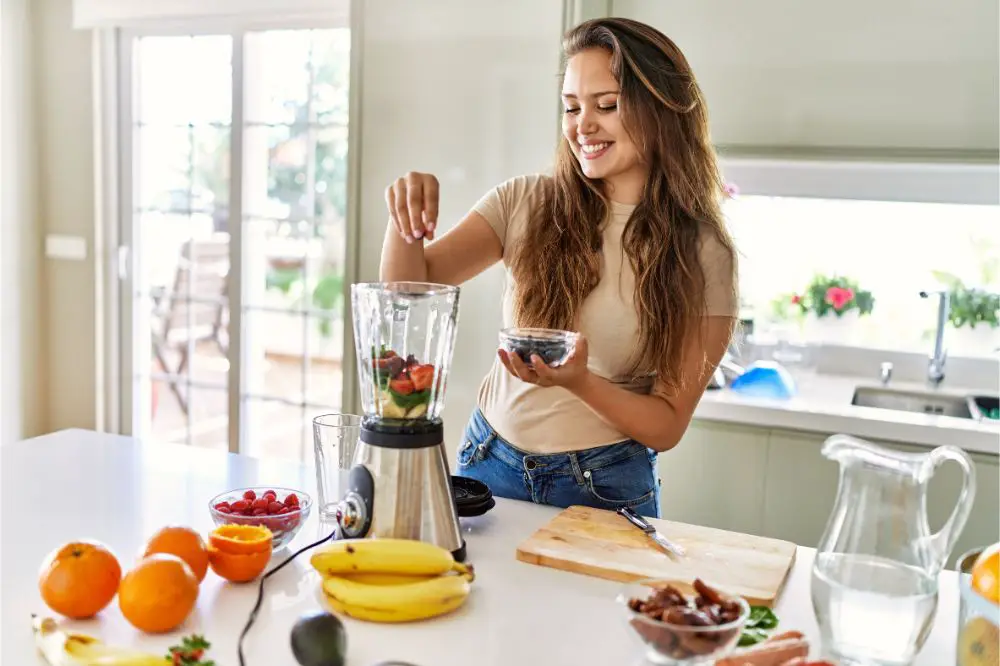Blenders are commonly used for making smoothies, sauces, and other dishes that usually contain a mix of fruits, vegetables, and probiotics. But you might be wondering if the blending process can actually harm or kill these beneficial probiotics?
In this article, we’ll discuss what probiotics are, why they’re essential for our health, how blenders work, and if the blending process can negatively affect probiotics. We’ll also offer tips for preserving their health benefits while blending your favorite recipes.
What are Probiotics?
Probiotics are live microorganisms that provide numerous health benefits, specifically for our digestive system. These good bacteria are usually found in fermented foods and dietary supplements.
When consumed, probiotics can help improve our gut health by balancing the microbiome and encouraging the growth of beneficial bacteria. They have been linked to improving digestion, boosting immunity, and reducing inflammation in the body.
Why are Probiotics Important for Health?
Probiotics are essential for maintaining a healthy gut microbiome, which in turn supports overall health by promoting digestion, immune functions, and absorption of nutrients.
These beneficial microorganisms also help prevent harmful bacteria from colonizing in our gut, thereby protecting us from diseases caused by pathogenic organisms. Therefore, considering the potential impact of blending on these live cultures is crucial to retaining their benefits in your favorite smoothies and other blended dishes.
How Blenders Work
Blenders function by rotating sharp blades at high speeds, creating a vortex that breaks down ingredients into a smooth mixture. This process also generates friction, which can cause a temperature increase within the blended contents, potentially affecting temperature-sensitive components like probiotics.
Mechanism of Blending
When you blend ingredients in a blender, the mechanism involves a combination of tearing, grinding, and chopping actions. The blender’s blades rotate at high speeds, creating a vortex that draws the ingredients towards them. This process breaks down the food particles into smaller pieces and eventually forms a smooth, homogenous mixture.
While this process is great for combining ingredients and making your favorite smoothie, the high-speed spinning and cutting action can generate heat in the mixture. As we’ve discussed, heat can negatively impact probiotics, altering their structure and reducing their efficacy.
It’s important to consider how blending affects probiotics and to take steps to protect them during blending.
Temperature during Blending
During the blending process, temperature can play a significant role in the survival of probiotics. As blades rotate at high speeds, they generate friction, which in turn produces heat.
The temperature of the blended mixture can rise significantly, especially when using high-speed blenders. It’s essential to monitor blending temperatures, as excessive heat can damage or even kill probiotics, negating their health benefits. However, some probiotics are more heat resistant than others, so it’s important to understand the specific heat sensitivity of the strain you’re working with to optimize blending conditions for maximum survival rates.
The Effects of Heat on Probiotics
Although blending can cause a temperature rise, it’s important to remember that various probiotic strains have different heat sensitivity levels. Some strains may survive the blending process better than others, so always consider factors like duration of blending and preferred temperature for optimal benefits.
Heat Sensitivity in Different Probiotic Strains
It’s important to note that not all probiotic strains are created equal in terms of heat sensitivity. Some strains may be more resistant to heat than others, meaning they can withstand higher temperatures before being negatively affected. This factor will impact the survival of probiotics in a blending process, as well as when exposed to heat during food preparation, like cooking or baking. Therefore, understanding the specific heat sensitivity of the probiotic strains you are consuming can help you make more informed decisions about how to incorporate these beneficial microbes into your diet without compromising their viability.
Recommended Temperatures for Probiotics
For optimal probiotic survival, it is crucial to keep temperatures in check. Most probiotics thrive at temperatures between 35-115°F (1-45°C), the temperature range conducive for the art of fermentation. In order to maintain the viability of these helpful microorganisms, try blending at the lowest speed and shorten the blending time.
Additionally, you can blend other ingredients first and then mix in the probiotic-rich food toward the end to minimize exposure to potentially damaging factors. This way, you can continue enjoying your blended recipes while retaining the benefits that probiotics have on your overall health.

Factors Affecting Probiotics Survival in a Blender
Various factors can impact probiotics’ survival in a blender. These include blending duration, blade type, and container material. To preserve probiotics, consider blending at a low speed, shortening blending time, or adding probiotics after blending the other ingredients.
Duration of Blending
Another important factor to consider when blending your probiotics-rich ingredients is the duration of blending. The longer you blend, the more likely it is that the heat generated becomes excessive, which can then potentially harm your probiotics. Therefore, it’s a good idea to blend in short bursts or at low speeds to minimize the heat generated.
Additionally, you can try adding some ice or cold liquid to help keep the temperature in check while blending. By being mindful of blending time, you can help preserve the beneficial properties of probiotics in your tasty concoctions.
Types of Blender Blades
Choosing the right type of blender blades can also help in preserving probiotics when blending. Avoid using sharp or serrated blades, as they can cause more friction and heat to build up, damaging the probiotics. Instead, opt for flat, blunt blades designed for gentle blending. These are usually found in immersion (handheld) blenders, which are ideal for blending at lower speeds and for shorter durations.
Additionally, be careful when cleaning your blender blades, as bacteria from other foods could potentially contaminate your probiotic blend. Wash them thoroughly after each use with gentle, non-toxic cleaning products.
Type of Container Material
Another factor to consider is the type of container material your blender uses. Some materials might retain more heat than others and may cause an unhealthy environment for probiotics. For example, plastic containers may increase the temperature during blending more than glass or stainless steel ones. Thus, it’s important to be aware of the heat conductivity of your blender’s container and choose materials that do not drastically increase temperature to ensure the survival of beneficial bacteria during the blending process.
Tips for Preserving Probiotics in Blended Foods
To preserve probiotics in blended foods, blend at low speed, shorten blending time and consider adding probiotics after blending. These tips help reduce heat and potential damage caused by the blender, ensuring that these beneficial microorganisms remain active and effective in promoting gut health.
Blending at Low Speed
If you’re looking to preserve probiotics while using a blender, consider blending at low speeds. This minimizes the amount of heat generated from the friction between the food and the blades, which in turn can help maintain the viability of the probiotics.
Lower speeds and taking breaks during the blending process also help keep the temperature within the recommended range, ensuring the good bacteria in your concoction stay alive and ready to provide health benefits.
Shortening Blending Time
To minimize any potential harm to probiotics while using a blender, consider shortening the blending time. By quickly incorporating the ingredients, you’ll reduce the exposure to heat and friction generated during the process.
Reducing blending time also prevents the ingredients from being finely pureed, which may help maintain the integrity and stability of the probiotics. Remember, it’s a balance between getting a desired texture and preserving the beneficial bacteria in your blended creation.
Adding Probiotics after Blending
To ensure that you’re getting the maximum benefits of probiotics in your blended concoctions, consider adding them after blending. This way, you can avoid exposing the probiotics to the potential heat and mechanical stress caused by the blender.
You can simply stir in your favorite probiotic-rich foods or supplements, like yogurt, kefir, or a powdered supplement, once the blending process is complete. By doing so, you’ll be able to maintain the integrity of the probiotics and fully enjoy their health benefits.
So, the next time you whip up a smoothie or a bowl of soup, remember to add those amazing probiotics after blending!
Conclusion
Blenders can potentially harm probiotics in your food due to heat generation and mechanical stress. However, by using low blending speed, minimizing blending time, and incorporating probiotics after blending, you can help maintain their health benefits in your delicious smoothies and other blended concoctions.

